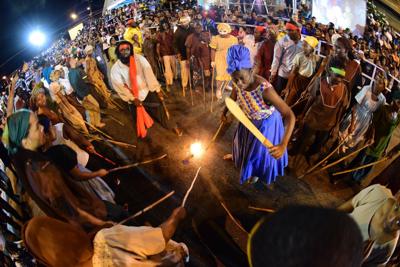

As we revel in the vibrancy of today's Carnival costumes, it's essential to reflect on the journey that brought us here. The Canboulay Riots of 1881 in Trinidad marked a pivotal moment in the evolution of Carnival, symbolizing resistance, resilience, and the birth of a cultural movement.
In the early hours of Carnival Monday in 1881, a clash erupted between freed Africans and colonial authorities in Port of Spain. The revelers, armed with lighted sugar canes, known as "cannes brulées" and accompanied by drumming and chanting, were met with force as the police attempted to suppress their celebrations. This confrontation was not merely about a festival; it was a stand against the oppression and marginalization of the Afro-Trinidadian community.
The aftermath of the riots led to significant changes. The colonial government, aiming to curb the unrest, enacted the Peace Preservation Act of 1884, which prohibited public carrying of torches, drumming, and stick-fighting. These restrictions, however, did not quell the spirit of the people. Instead, they sparked innovation. The tamboo bamboo bands emerged, creating rhythms that echoed the past while forging a new musical path. This ingenuity laid the groundwork for the development of the steelpan, an iconic symbol of Trinidadian culture.
Today, as we don elaborate costumes and dance through the streets, we must remember that Carnival is more than a celebration; it's a testament to the struggles and triumphs of those who came before us. The Canboulay Riots remind us that every bead, every feather, and every rhythm carries the weight of history and the spirit of resistance.
